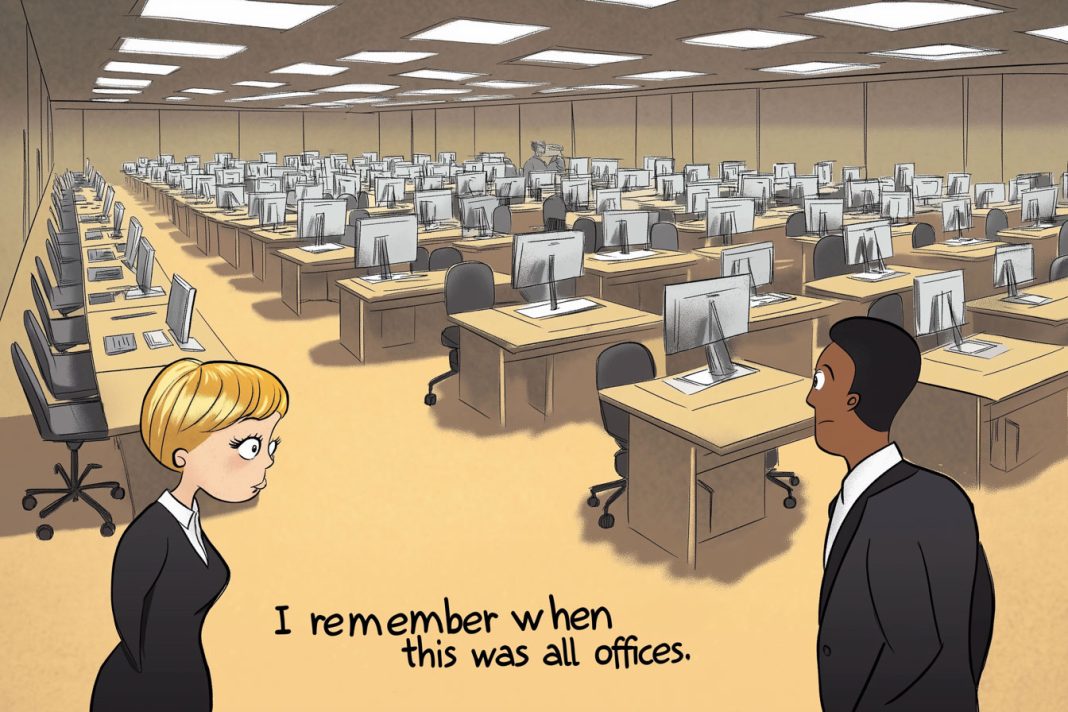Open-Office Design: The Wrong Direction for VA
Management’s primary responsibility is to create an environment that encourages productivity and engagement. At the heart of this lies the design of our workspaces, which significantly impacts how we work. Unfortunately, the Department’s plan to renovate the entire 810 Vermont Ave building into an open-office concept raises serious concerns that could hinder employees’ ability to focus and thrive.
The move to an open-plan layout would eliminate privacy, force employees to use designated phone booths for confidential conversations, and expose sensitive information (PII) to anyone passing by. While it may seem like a modern approach to office design, the reality is that this change poses considerable risks to productivity and employee well-being.
What’s Wrong with Open-Office Design?
Here are five alarming reasons why we need to rethink this plan:
1. An Open-Office Design Leads to Lack of Privacy
An open office eliminates the personal space employees need to concentrate. Without individual workspaces, people feel constantly exposed and struggle to maintain the focus required for high productivity. The disruption of privacy also negatively impacts well-being, leading to stress and burnout.
2. An Open-Office Design can Lead to Increased Stress and Health Issues
Studies, such as one conducted by Queensland University of Technology, have shown that 90% of employees in open-plan offices experience increased stress and higher blood pressure. The long-term effects of this stress can result in health problems, burnout, and higher turnover rates.
3. Decreased Face-to-Face Communication
While open offices are intended to foster communication, they often have the opposite effect. Studies in the UK and US revealed that open-office designs led to a 70% drop in face-to-face interactions. Instead, employees turned to email and instant messaging, which increased by 22% to 50%. Employees try to avoid disturbing others, creating a communication paradox.
4. The “Fourth Wall” Mental Barrier
In open offices, employees often create a mental “fourth wall” to block out distractions, like actors separating themselves from their audience. Headphones and focused body language signal that they don’t want to be interrupted, leading to more isolation and less collaboration. However, maintaining this mental barrier is exhausting and reduces overall engagement.
5. An Open-Office Design can Cause Increased Distractions and Errors
The constant noise and activity in open offices can lead to more mistakes and frustration. Employees are forced to put in extra effort to stay focused, which can cause errors, slow down projects, and lower morale. As a result, productivity suffers, and the workplace becomes less efficient.
It’s Time to Act
We need to speak up and engage in the renovation process now before it’s too late. This isn’t just about whether employees “enjoy” their workspace – it’s about safeguarding productivity, the cornerstone of any successful organization. The proposed open-office design may look stylish, but it’s far from practical. And unless the Department plans on offering Swedish meatballs, this IKEA-inspired layout will leave employees constantly battling distractions, to the detriment of their work.
The articles listed below provide further insight into why open-office layouts are a risky choice. If we want to maintain a productive and focused environment, it’s time to push back against this design and ensure our voices are heard.
Further Reading:
Science confirms it: Open offices are a nightmare – Fast Company
What Science Says About Open Offices and Productivity (adobe.com)
Fixing the Hated Open-Design Office | Scientific American
Here’s proof that open office layouts don’t work, and how to fix them | PBS News
Let’s act before this design becomes our reality for decades to come. The stakes are high, and our productivity depends on it.





